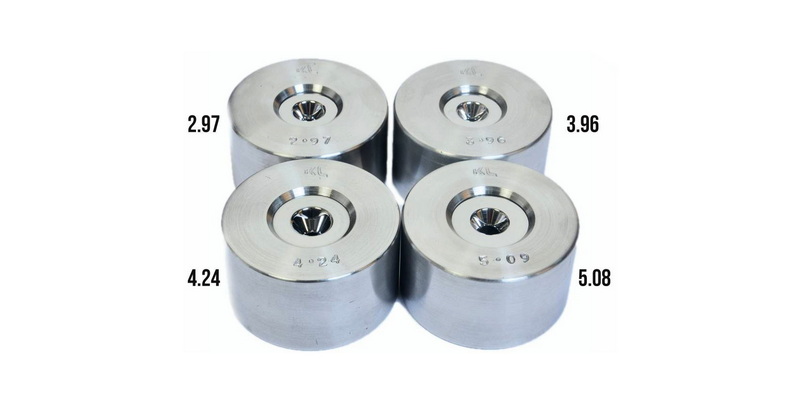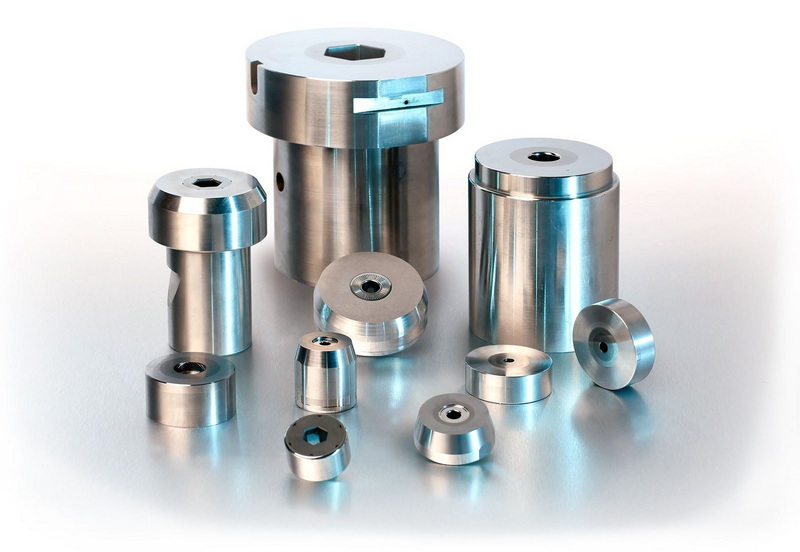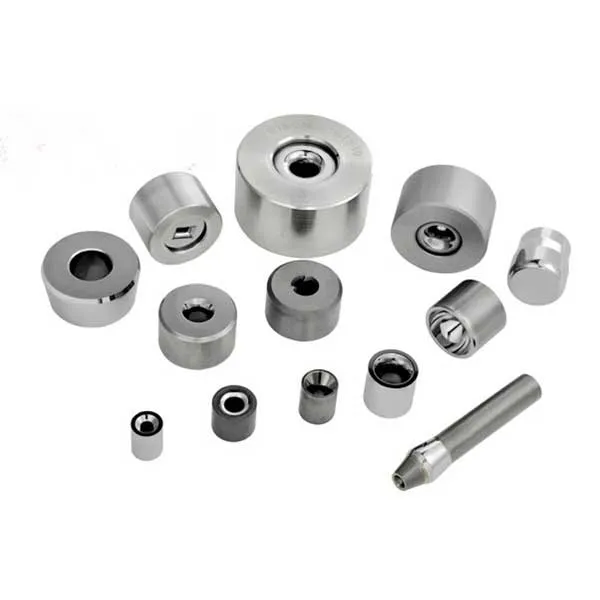Content Menu
● Introduction: The Role and Value of Carbide Drawing Dies
● Understanding Carbide Drawing Dies
● The Carbide Drawing Die Manufacturing Process
>> 1. Material Selection
>> 2. Blank Preparation
>> 3. Rough Machining
>> 4. Finish Machining
>> 5. Assembly and Mounting
>> 6. Heat Treatment
>> 7. Final Inspection and Quality Control
>> 8. Customization and Packaging
● Applications and Advantages of Carbide Drawing Dies
● Australian Carbide Drawing Dies Manufacturers & Suppliers: Profiles
>> Hard Metals Australia Pty Limited
>> Techgong Australia Pty Ltd
>> SEI Carbide Australia Pty Ltd
>> Kennametal Australia Pty Ltd
>> Michan Australia Holdings Pty Ltd
● Considerations When Selecting a Carbide Drawing Die Supplier
● Market Trends and Innovation
● The Future of Carbide Drawing Dies in Australia
● Conclusion
● Frequently Asked Questions (FAQ)
>> 1. What makes carbide drawing dies superior to other types?
>> 2. Can Australian manufacturers handle bulk OEM and custom orders for international buyers?
>> 3. What are the typical lead times and support services provided?
>> 4. How can die longevity be maximized in demanding production environments?
>> 5. Do suppliers offer dies in both standard and custom geometries?
Australia's industrial sector stands at the forefront of innovation and reliability, especially in precision tooling. Carbide drawing dies are essential tools used throughout the manufacturing value chain—particularly in wire, rod, and tube forming for industries ranging from automotive to construction, mining, and electronics. This comprehensive article explores the Australian landscape for carbide drawing dies manufacturers and suppliers, with an emphasis on process know-how, market dynamics, and supplier selection.

Introduction: The Role and Value of Carbide Drawing Dies
Carbide drawing dies play a critical role in shaping and finishing metal wires, tubes, and rods with remarkable precision and durability. Employing tungsten carbide, these dies achieve an impressive combination of hardness, wear resistance, and mechanical stability. Australian manufacturers are highly regarded among international buyers and OEMs for their commitment to technical advancement, high product quality, and flexible service.
Understanding Carbide Drawing Dies
Carbide drawing dies are engineered from tungsten carbide—a compound formed by combining tungsten and carbon and then sintering at extremely high temperatures. This process yields a material with unparalleled hardness, second only to diamond. Key properties of carbide drawing dies include high resistance to wear, consistent maintenance of dimensional tolerances in production, and compatibility with a broad variety of base metals such as stainless steel, carbon steel, copper alloys, and aluminum. Because of these features, carbide drawing dies have become irreplaceable equipment in high-volume metalworking environments.
Manufacturers typically produce dies in various shapes and geometries—including round, square, hexagonal, and elliptical—to accommodate different customer requirements. Precision is the hallmark: products must deliver tight dimensional control, smooth drawn surfaces, and long operational life even under the most demanding wire-drawing or tube-reduction regimes.
The Carbide Drawing Die Manufacturing Process
Creating a high-quality carbide drawing die is a multi-stage process requiring technical expertise and unparalleled quality control. The typical production process includes:
1. Material Selection
First, a premium grade of tungsten carbide is chosen. Expert suppliers focus on delivering carbide material with a uniform structure, high purity, and excellent thermal stability. These characteristics ensure the finished die achieves optimal hardness and resistance to thermal shock, maintaining performance under intense heat and pressure.
2. Blank Preparation
The selected tungsten carbide is then formed into blanks. This step involves precise cutting, forging, and initial forming. The blank serves as the foundational form for the die, so accuracy in its preparation is vital for the quality of the finished tool. The forging parameters—such as heating temperature and cooling speed—are rigorously controlled to ensure a homogeneous structure and consistent mechanical properties.
3. Rough Machining
Blanks are shaped using rough machining techniques, which may include milling, turning, and drilling. These machining steps must carefully balance efficiency and material preservation; excessive cutting force or improper tool selection can damage the blank and compromise its performance. Carbide blanks are inherently hard, so diamond-tipped or similarly robust machine tools are required.
4. Finish Machining
Once a blank is close to its final shape, finish machining commences. This phase involves grinding, polishing, and lapping the die to exacting specifications. Grinding wheels with diamond abrasives are commonly used to achieve a precise surface finish and to ensure tight dimensional tolerances. The goal is to produce a drawing surface that's exceptionally smooth, minimizing friction and maximizing wire quality as material passes through the die.
5. Assembly and Mounting
The carbide die core is carefully mounted in a steel casing or sleeve. This assembly process, known as interference fitting, involves accurately sizing the steel sleeve to create a tight fit—sometimes using hot or cold pressing methods. In the hot pressing approach, the steel sleeve is expanded by heat, and as it cools, it contracts around the die, providing a secure and stress-distributing grip. The cold pressing method uses mechanical force and is typically reserved for smaller dies or those used with softer metals.
6. Heat Treatment
Selective heat treatment processes—such as quenching and tempering—may be applied to optimize the die's core properties and reduce internal stresses. Precise control of the temperature profile and cooling rate is essential to enhance the tool's strength, minimize the brittleness, and extend operational life.
7. Final Inspection and Quality Control
Completed dies undergo stringent inspection for dimensional accuracy, surface finish, and hardness. Measuring tools and testing devices assess whether each die conforms to specification, with surface quality and hardness being particularly critical for high-speed, high-volume manufacturing applications.
8. Customization and Packaging
Top manufacturers also offer custom die design to meet specific operational needs—ranging from unique wire sizes and shapes to specialized coatings for extreme working conditions. High-quality packaging ensures safe transportation and preserves tool precision during storage and handling.
Applications and Advantages of Carbide Drawing Dies
Carbide drawing dies find application in diverse settings, from heavy industry to electronics and precision engineering. They are commonly used for:
- Drawing high-strength steel wire for cables and construction
- Shaping aluminum and copper wire for electrical conductors
- Manufacturing precision rods and tubes for automotive and aerospace uses
- Forming specialty alloys for medical and scientific equipment
Carbide dies offer several operational advantages. They last significantly longer than steel dies, require fewer replacements, and improve efficiency by producing smoother, more precise wire or tubing. This leads to lower downtime and higher productivity on the line.

Australian Carbide Drawing Dies Manufacturers & Suppliers: Profiles
Australia hosts several world-class manufacturers and suppliers specializing in tungsten carbide drawing dies, serving both the domestic and export markets. Profiles of key companies include:
Hard Metals Australia Pty Limited
With roots reaching back to 1984, Hard Metals Australia specializes in manufacturing robust carbide tools, including drawing dies, drill bits, and wear parts. Their R&D-driven approach focuses on improved carbide brazing techniques, advanced diamond tooling, and local rapid-response manufacturing. The company is well known for developing custom solutions for industrial clients needing high durability and technical precision.
Techgong Australia Pty Ltd
Techgong combines global R&D leadership with hands-on technical support in Australia. Established as a subsidiary of a leading geotechnical engineering equipment provider, it delivers a broad portfolio of carbide tools, including advanced wire and tube drawing dies designed for tough industrial settings. Their engineers work closely with clients to develop OEM and custom tools for specialized applications.
SEI Carbide Australia Pty Ltd
As the Australian branch of a major Japanese carbide and advanced materials conglomerate, SEI Carbide Australia leverages international expertise and local service. The company supplies precision carbide drawing dies and cutting tools tailored for high-tolerance operations in the aerospace, electronics, and automotive industries.
Kennametal Australia Pty Ltd
Kennametal is a global brand with a strong presence in Australia, renowned for its innovation in wear parts and cutting-based technologies. Their carbide drawing dies are regarded as industry benchmarks for performance, supported by robust after-sales technical assistance, process optimization, and customized tooling for diverse manufacturing requirements.
Michan Australia Holdings Pty Ltd
Michan Australia, based in New South Wales, is an established provider of custom-engineered tungsten carbide dies and castings. Serving mining, agriculture, tooling, and engineering sectors, the company stands out for its flexible manufacturing approach and ability to support hard-to-source parts. Their strength lies in delivering both standard and non-standard dies alongside technical consultancy.
Considerations When Selecting a Carbide Drawing Die Supplier
Choosing the right supplier or manufacturer is a strategic decision impacting operational efficiency and end product quality. When evaluating carbide drawing dies manufacturers and suppliers, companies should consider:
- The supplier's depth of expertise, history of innovation, and problem-solving capacity
- Ability to develop custom die designs for non-standard or challenging product requirements
- Evidence of robust quality assurance and manufacturing certifications, such as ISO standards
- Reliability in delivery times, packaging, and after-sales technical support
- The breadth of available die geometries and coating options for specific applications
Establishing a long-term partnership with a supplier that offers transparent technical communication and post-delivery support can lead to significant cost savings and process improvements.
Market Trends and Innovation
The field of carbide drawing dies is dynamic. Several innovation trends are evident in the Australian market:
- The integration of new binder compositions to further extend die life and increase resistance to extreme drawing pressures and abrasive materials
- Adoption of CNC machining and wire EDM (electric discharge machining) technologies to achieve ultra-tight tolerances and custom die shapes
- Introduction of advanced surface coatings and lubricants to reduce friction, increase throughput, and improve product finish
- Use of real-time monitoring and data analysis for predictive maintenance and quality assurance in die usage
These developments empower customers with more consistent results, longer tool life, and minimized maintenance demands, critical in high-volume industrial operations.
The Future of Carbide Drawing Dies in Australia
Australian manufacturers and suppliers continue to expand their research, capabilities, and global reach. The increasing demand for high-precision metal forming in technology-driven sectors, such as renewable energy, medical devices, and electric vehicles, is driving further investment in carbide die technology and process automation.
Export-oriented OEMs and distributors are also benefiting from alliances with Australian die suppliers known for their responsive customer service and ability to deliver both small and large batch customizations to international standards.
Conclusion
Australia's carbide drawing dies industry stands as a model of precision engineering, innovation, and service reliability. With robust capabilities in both standard and custom die solutions, local manufacturers and suppliers meet global demand across numerous industrial sectors. By investing in advanced technology, stringent quality control, and customer-focused services, they provide partners around the world with the die solutions required for efficient, high-quality metalworking. Careful selection of a supplier or partner, based on technical capability and support, ensures lasting business value for OEMs, wholesalers, and producers reliant on premium carbide dies.

Frequently Asked Questions (FAQ)
1. What makes carbide drawing dies superior to other types?
Carbide drawing dies offer exceptional hardness and wear resistance, drastically extending service life compared to traditional steel dies. They maintain precise tolerances even under continuous, high-pressure operations, resulting in superior wire or tube quality with less downtime.
2. Can Australian manufacturers handle bulk OEM and custom orders for international buyers?
Yes, leading Australian manufacturers provide full OEM services and custom die solutions to both domestic and international clients, ensuring compliance with diverse standards and production specifications.
3. What are the typical lead times and support services provided?
Lead times depend on order complexity and quantity but are generally competitive due to advanced local manufacturing capabilities. Top suppliers offer technical consulting, rapid prototyping, after-sales support, and expedited shipping upon request.
4. How can die longevity be maximized in demanding production environments?
Regular die inspection, proper lubrication, use of appropriate drawing speeds, and prompt replacement of worn dies are critical practices. Some suppliers also provide advanced coatings and predictive maintenance guidance to extend service life further.
5. Do suppliers offer dies in both standard and custom geometries?
Absolutely. While standard round, square, and hexagonal dies are widely available, most leading manufacturers also develop bespoke dies to match specific wire profiles and industrial requirements, including highly specialized forms for niche applications.
















